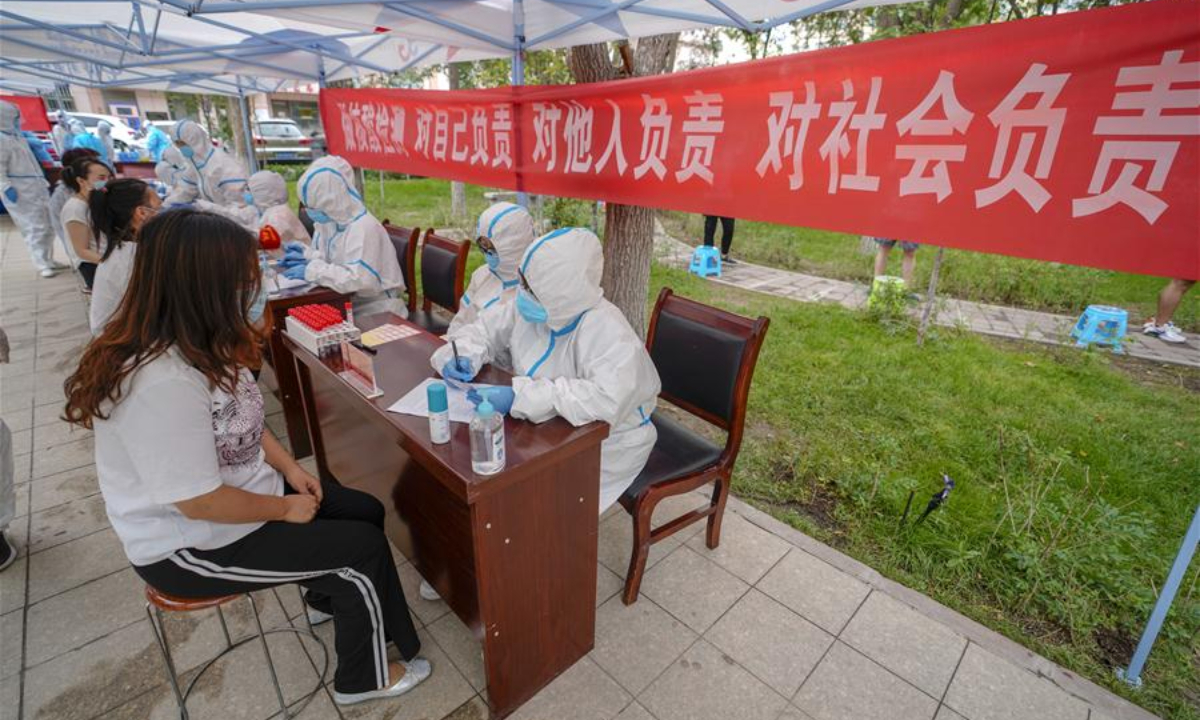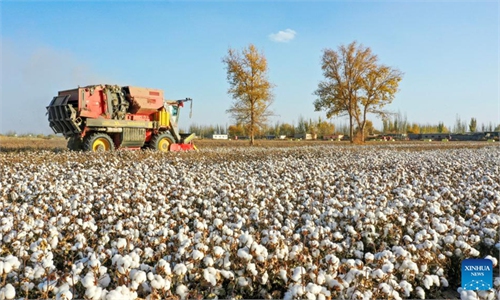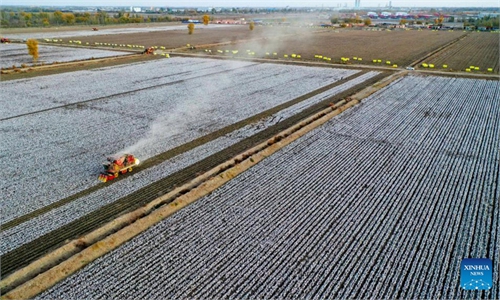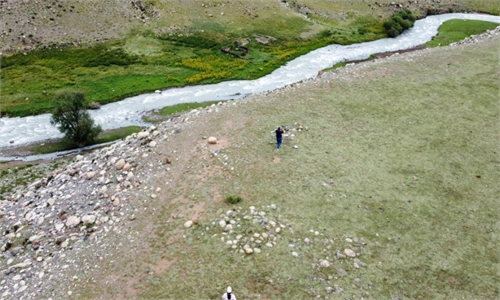Urumqi announces clearance of COVID cases in communities, to resume normal life in low-risk areas

Medical workers collect swab samples for residents at Tianshan District in Urumqi, northwest China's Xinjiang Uygur Autonomous Region. File photo:Xinhua
The government of Urumqi, capital of Northwest China's Xinjiang Uygur Autonomous Region, announced on Saturday morning that the city has basically cleared COVID-19 cases at community level, and will restore order to the lives of residents in low-risk areas in a phased manner.
Officials of the regional government stressed at Saturday's press conference that there are still a certain number of high-risk areas in Urumqi, and the number of the daily confirmed infections in the past two days was still about 100. The risk of epidemic transmission still exists, and the prevention and control achievements need to be continuously consolidated.
The announcement came as Xinjiang region recorded 21 new local confirmed cases and 946 asymptomatic cases on Friday. Also, thirteen of the previous confirmed cases have been discharged from hospital, and 754 asymptomatic patients have been released from quarantine and medical observation.
According to the current situation of epidemic prevention and control, Urumqi will orderly restore the living order of residents in low-risk areas in stages, according to the press conference.
Residents in low-risk areas can go out of home in an orderly manner while maintaining social distancing, wearing masks and not gathering together. People who need to go out for treatment and other purposes due to illness or other special reasons will be transferred from point to point by the community staff with relevant certificates.
Fruit and vegetable shops, convenience stores, barbershops and other living security business places in the low-risk communities can be opened. People who do not live in the community are not allowed to enter.
When all the communities become low-risk areas after assessment, residents can carry out cross-community activities within the district, but they are forbidden to enter high-risk areas. Public service places such as banks, supermarkets and farmers' markets can resume business.
The catering industry can provide self-service and delivery services. Scenic spots, parks and other outdoor public places can resume operation and the personnel should be limited to less than 50 percent of the maximum reception capacity.
An Urumqi official noted at the press conference that people who have been allowed to go out of their home and have activities in the community for three days can go out of the community, and have activities in the low-risk area of the district or county.
A high-risk area can be identified as a low-risk area after no new infections have been found for five consecutive days and local residents can resume normal life.
Separately, on Saturday, Ma Xingrui, Party chief for Xinjiang region, stressed in Hotan Prefecture that officials should put people and lives first, follow the ninth version of Protocol for Prevention and Control of COVID-19, implement 20 optimized anti-epidemic measures, improve strategies, quickly stop the virus spread, resolutely win the battle against the epidemic, and protect the life and health of people of all ethnic groups to the greatest extent possible.
Ma requested local officials at all levels to clearly be aware of the severity and complexity of the epidemic situation in Hotan, take targeted measures in light of local conditions, and scientifically analyze the situation in different regions, such as urban and rural areas, so as to pool resources to contain the epidemic in key regions quickly, accurately and efficiently.
Ma said the authorities should do a good job in providing psychological counseling, attach great importance to and make every effort to address people's demands for urgent and sudden difficulties, such as seeking medical treatment.
All local authorities and departments should always tighten the safety of production, comprehensively investigate risks and hidden dangers in key industries such as hazardous chemicals, mining, transportation and construction, promptly carry out fire safety control in factories and warehouses, logistics and storage, high-rise buildings and large complexes, and resolutely prevent major accidents from occurring.
Since November 16, the Xinjiang region has reported more than 900 local new cases every day. According to the regional health authority, Xinjiang recorded 992 local cases on Saturday, 443 of which were from Kashi and 413 from Hotan.
A Xinjiang-based anti-epidemic expert surnamed Zhang pointed out the continuous infections seen amid strict restrictions can be attributed more to the highly transmissible virus in the current peak season of respiratory diseases, which means it is still extremely challenging to put the outbreak under control.
Just like other epidemic-hit cities, the very urgent problems in Xinjiang region are the guarantee of daily supplies for residents and medical services for elderly people who had underlying diseases, Zhang said.
Global Times



